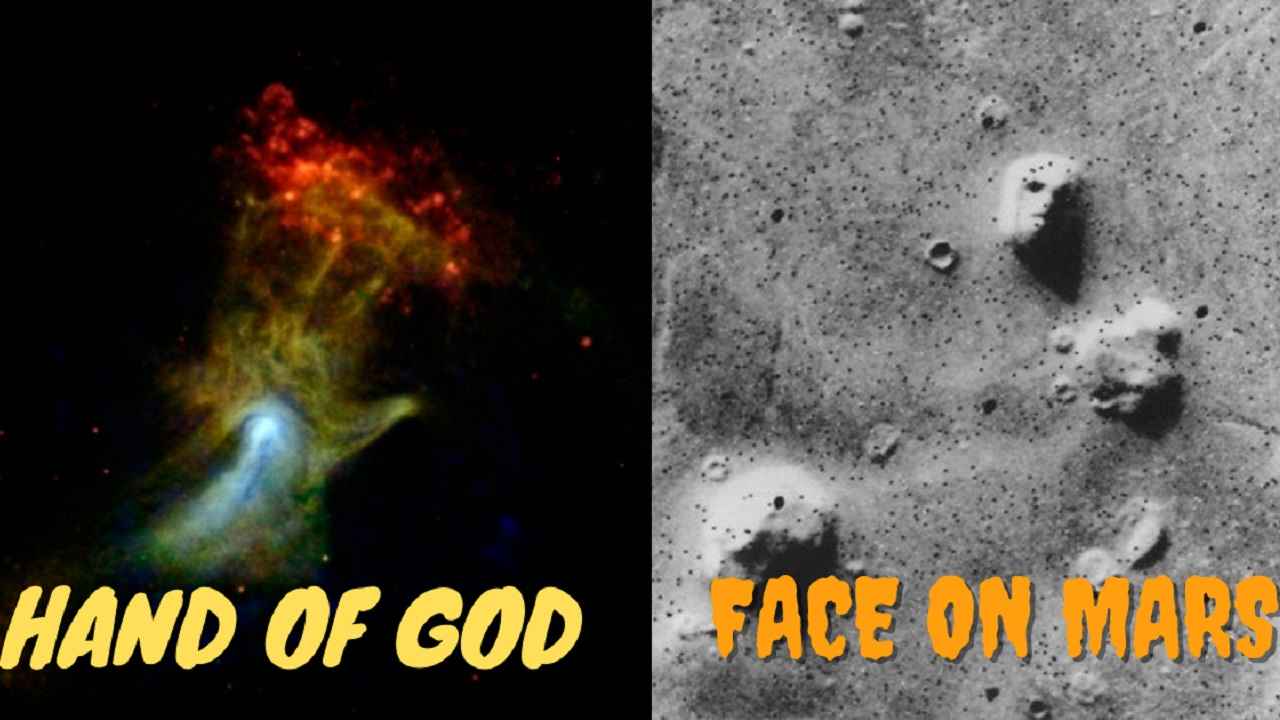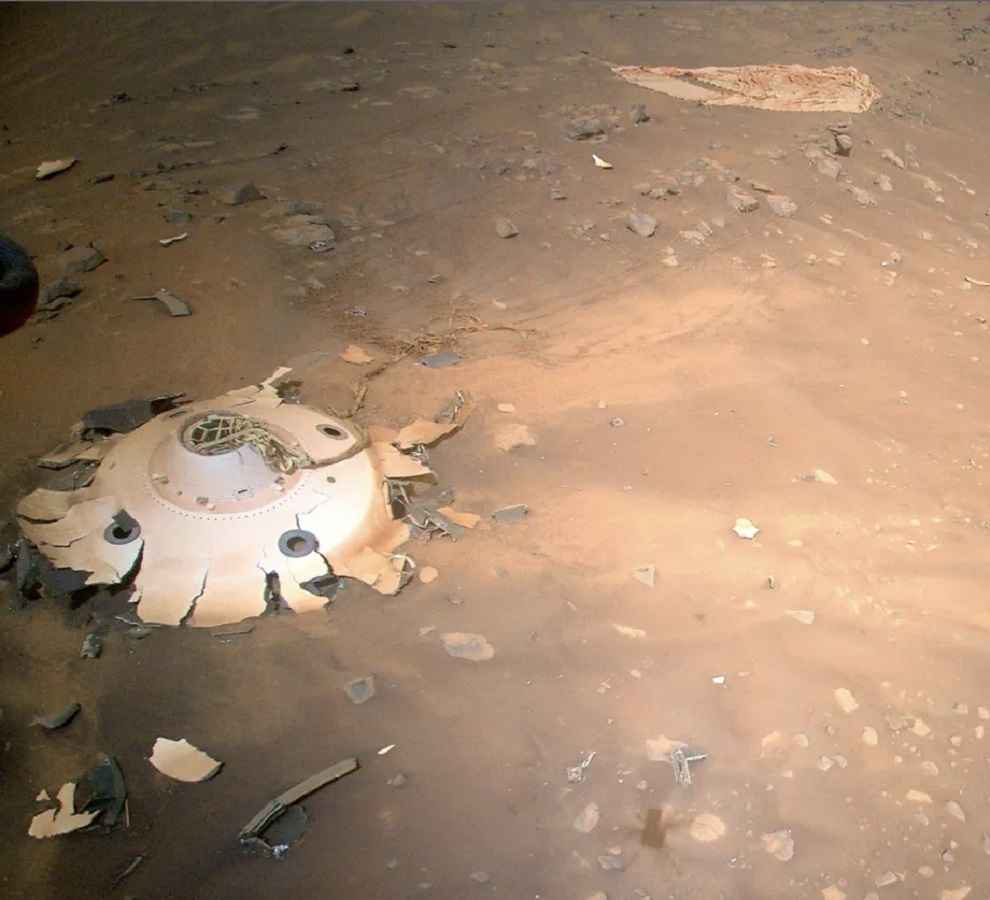

Space is known to be dark, humongous, and full of mysteries. It is not only the beautiful constellations, celestial bodies or the beautiful galaxies such as the Milky Way. It consists of things which are deeper and darker and are unknown to human cognizance. There are plenty of nebulas, super nebulas, black holes and other bizarre things that are mysterious to the layman. Space is predominantly governed by electromagnetic force, which we can’t feel. With each passing day, space comes close to brimming with strange phenomena; gigantic explosions, formations of ghostly nebulas, and meteor showers. The very idea of space is said to be something which is full of ‘twinkling’ surprises, but this isn’t true with each and everything that is witnessed in space. Science has answered almost all the questions the ‘space’ has enquired, but not all!
Below are 10 spooky things scientists have discovered in space.
The Perseverance Rover, launched in 2020, landed successfully on the red planet in 20221, with a mission to find ancient life on Mars. NASA’s Ingenuity helicopter was carried by the rover onboard, in order to capture the sights which the rover couldn't. The landing of the rover is said to be one of the best-documented landings in history. The rover went through a crucial seven-minute to descend onto the surface of Mars. The parachute and the backshell which helped in the smooth landing of the river separated.
Ingenuity on April 19th, 2022, took photographs of the remains of the parachute and the backshell (a cone-shaped part of the descent vehicle). The pictures which arrived showed the debris of the two. The images are rather eerie and seem like a wreckage of an alien spaceship.


Skull Nebula, majorly known as NGC246, lies in the southern constellation of Citrus(whale), which is about 1,600 light-years away from Earth. It was formed when a sun-like star exploded its outer layer leaving behind a white dwarf. NGC246 was snapped by the European Southern Observatory (ESO)with the use of a very large telescope in Chile. The eerie nebula holds a striking resemblance to that of a skull. It is a strange combination of three stars, formally known as the triple-stellar system. The white dwarf is one of the two stars which are present in the middle of the nebula. The white dwarf also consists of a dim red dwarf stellar companion. These two stars orbit each other as a binary pair. The gasses of the nebula hydrogen (red) and oxygen (blue) glow, making it look like a skull against the dark backdrop of space.
Pulsar wind nebula, commonly addressed as Hand of God. It is actually a cloud of material which was ejected from a star that exploded and looks more like an x-ray of a hand. It was formed by the leftovers of a dense star which blew up in the supernova explosion. NASA's Nuclear Spectroscopic Telescope Array, or NuSTAR, captured this image. The stellar corpse known as PSR B1509-58 is a pulsar. The pulsar spins around rapidly seven times per second and fires out a particle wind into the material( material that was ejected on the star explosion) around it. It looks like an x-ray as the particles interact with magnetic fields around the material, which in turn makes them glow.
Formally known as SH2-136 is a reflection nebula which is located at the edge of the Cepheus Flare molecular cloud complex. What looks like some ghostly figures trying to escape from the cloud of gas and dust. This dark nebula is about 1,200 light-years away. A protostar can also be seen forming on the lower right side of the nebula. There are several new stars located in the nebula, which gives it a brownish colour. What appear to be ghostly shapes are basically cosmic dust clouds that get illuminated in the dim light of starlight. At the top of the nebula is a binary star system which is in its early stages of formation.
IC 2118, Witch Head Nebula is associated with the star Rigel in the constellation Orion. It can be found in the “knee” of the constellation as stated by NASA. Nebula, which looks like the head of a wicked witch with a pointy nose, is home to baby stars who are yet to start their cosmic lives. This nebula is also believed to be the leftover of an ancient supernova. It glows because of the light which is reflected from the stars. The stars are blue in colour and the dust grains reflect blue light more than red, making this nebula look blue in colour. The image was taken by NASA’s WISE Infrared Telescope.
The image taken by NASA’s Viking orbiter 1, looks like a human face on the Cydonia region of the red planet which falls between the southern highlands and smothers the northern plains of the planet. The structural formation of the face is mainly due to the landforms and the planet's surface. The rocky face is an optical illusion which is formed due to the landslides and debris and also due to the curved mountain range giving an illusion of eyes, and nose.
The Ghost head nebula is also known as the NGC 2080. It appears to have two flaming hot eyes and is a star-forming region. The glowing eyes are hot blobs of hydrogen and oxygen. It is present in the Large Magellanic Cloud which is a satellite galaxy of the Milky way galaxy. It is a chain of star-forming regions which lies south of 30 Doradus nebula in the Large Magellanic Cloud. The lights in the nebula (red and blue )come from regions of hydrogen gas which get heated up by the nearby stars. With the glowing oxygen, the green light comes. It is located about 170,000 light-years away from earth.
The Black widow nebula is a star-forming cloud which consists of gas and dust. It is located 10,000 light-years from earth. It looks like a giant red spider in space. The streams of dust which come from the middle of the nebula look like spider’s legs, here massive young stars are forming. It lies above the galactic plane in the southern constellation of Circinus. It is nearly invisible as it is hidden behind what seems like a web of dust, from the galaxy's disk. The black widow nebula is a large cloud of dust and gas which creates multiple numbers of massive stars. The group of large stars along with strong winds blow out large bubbles which form the body and the legs.
It is a hotbed of star formation. It is located in the Large Magellanic Cloud, which is a dwarf galaxy that is gravitationally inclined towards the Milky way galaxy. It hosts a starburst region. It is considered to be the most stunning object in the southern sky. It is a giant nursery of baby stars. It transforms a massive reservoir of hydrogen gas into multiple stars.
An Asteroid with a grinning face, which looks more like a skull than an asteroid. Commonly known as Asteroid 2015 TB145. It passed within 486,000 km from earth on Halloween making it even more spooky. The rock, which is peculiarly shaped like a skull with gaping eye sockets and a nose hole, looked exactly like a growing human face.
Space holds the mysteries of the mind that have yet to be explored. What we know, and what we do not know both are comprised in the vacuum we termed ‘space’. And more often than not, we accord our beliefs, faith and affection towards the same.
So the next time you look up at the sky and see something your mind cannot register, will you give it the name of the divine, or will you be scared?